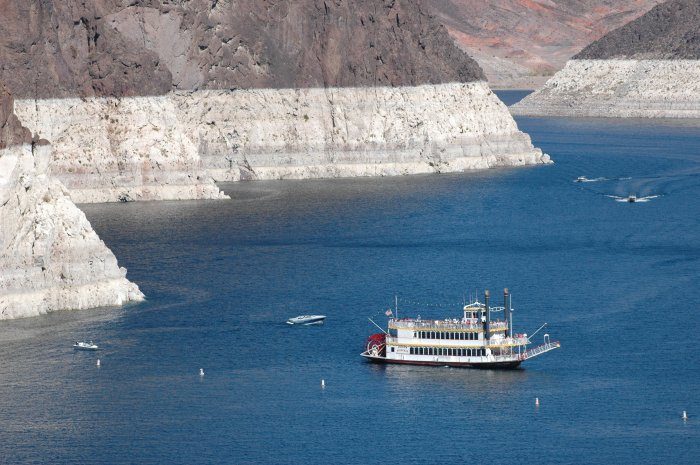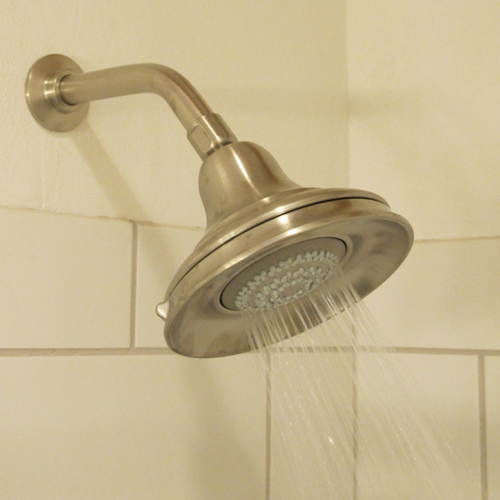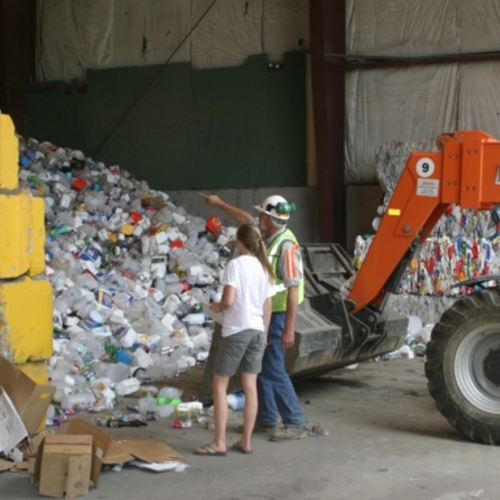
Image Credit: Ken Dewey
Last week we examined the amount of energy it takes to transport and treat water — and how we can conserve energy by using less water. This week, we’ll look at the inverse of that: how much water it takes to produce energy and how our energy conservation efforts reduce water use.
The water intensity of energy
Whenever water shortages loom anywhere, we hear about how much “embodied water” there is in various products. According to the Water Footprint Network, producing a slice of bread requires 11 gallons of water and producing a pound of beef takes 1,800 gallons. The same sort of analysis can be done with our energy sources. As with foods, different types of energy have different water intensities.
Electricity:
Electricity generation is highly variable in its water-intensity. Roughly 89% of U.S. electricity is produced in “thermoelectric” power plants. These are plants that use heat from burning coal or natural gas or from controlled nuclear fission to generate steam, which then spins turbines. Water is used to create the steam, and then more water is used to cool that steam, condensing it back into water. Most thermoelectric power plants built before 1970 have “open-loop” or once-through cooling systems that result in relatively little evaporation — though significantly warmer water is returned to the river or other source from which it was taken (which has its own environmental costs).
Most newer plants use “closed-loop” recirculation cooling; far less water is required, but most of that evaporates (consumptive use). Averaged nationwide, 0.47 gallons of water is consumed (evaporated) for each kilowatt-hour (kWh) of electricity produced by thermoelectric plants, according to a 2003 paper by researchers at the National Renewable Energy Laboratory (NREL), Consumptive Water Use for U.S. Power Production.
Most of our electricity not produced by thermoelectric power plants is generated by hydroelectric plants. This accounts for about 9% of the U.S. total. Hydroelectric plants don’t heat water to create steam, so water isn’t needed for cooling, but they use a lot of water nonetheless. Most hydropower is generated by damming rivers to create reservoirs. These reservoirs have significantly larger surface areas than the free-flowing rivers prior to damming, and evaporation from these reservoirs can be significant. Hydrologists produce “free water surface evaporation” maps to model this evaporation, which varies greatly by climate.
For the NREL study mentioned above, researchers calculated evaporation from the 120 largest power-generation reservoirs in the U.S. (representing 65% of total hydropower generation) and used that data to extrapolate evaporation from all of the nation’s 2,300 power-generation reservoirs: 9.05 billion gallons per day. Here’s how the water consumption from hydroelectric power generation in a few states compares: 18 gallons/kWh in Colorado, 21 gal/kWh in California, 65 gal/kWh in Arizona, and 137 gal/kWh in Oklahoma. Nationally, the average is 18 gal/kWh.
By weighting thermoelectric and hydroelectric power generation sources, the NREL report calculated an average water-intensity of electricity in the U.S. to be 2.0 gal/kWh. So if you use 500 kWh per month, that’s requiring, on average, 1,000 gallons of water.
Oil and gas:
Electricity isn’t the only form of energy that requires a lot of water to produce. According to a 2006 U.S. Department of Energy report to Congress, Energy Demands on Water Resources, conventional onshore oil extraction consumes relatively little water: 0.12 to 0.31 gallons of water per gallon of oil (0.8 – 2.2 gal/million Btu). But “enhanced” oil recovery practices, which are becoming increasingly common, are much more water-intensive. These practices range from 1.9 gal water/gal oil (14 gal/million Btu) to over 300 gal water/gal oil (2,500 gal/million Btu). Extracting oil from tar sands in Alberta takes 20-50 gallons/million Btu. Another 1.0 to 2.5 gallons of water are required to process and transport each gallon of oil (7-18 gal/million Btu).
With natural gas, conventional onshore extraction requires negligible water use, but processing and transport averages 3 gal water/million Btu. New “hydraulic fracturing” techniques (sometimes referred to as “frac’ing”), as are being used to recover natural gas from the Marcellus Shale formation, use a great deal of water (and contaminate that water in the process).
Renewables:
On the renewable energy front, some biofuels, especially ethanol produced from corn, are very water-intensive. A 2008 paper in the journal Environmental Science & Technology reported that a light-duty vehicle driven on an E85 fuel (85% ethanol) “consumes” a remarkable 28 gallons of water per mile! Utility-scale solar-thermal power plants that focus sunlight to super-heat an oil heat-transfer fluid, which in turn generates steam, require a lot of water, and that’s an issue in the desert environment where these are being built. (Some other solar-thermal technologies rely on Stirling engine technology, instead of steam turbines, so use almost no water.)
Bottom line: Save Energy to Conserve Water!
The bottom-line conclusion from all this — you saw this coming! — is that by conserving energy we save a lot of water. Replacing incandescent light bulbs with CFLs, upgrading to Energy Star appliances, insulating your house — virtually any energy improvement you make — will also save water. Some experts say this is really important; in the coming decades fresh water could become a more limited resource than energy.
In addition to this Energy Solutions blog, Alex writes the weekly blog on BuildingGreen.com: Alex’s Cool Product of the Week, which profiles an interesting new green building product each week. You can sign up to receive notices of these blogs by e-mail — enter your e-mail address in the upper right corner of any BuildingGreen blog page.
Alex is founder of BuildingGreen, LLC and executive editor of Environmental Building News. To keep up with his latest articles and musings, you can sign up for his Twitter feed.
Weekly Newsletter
Get building science and energy efficiency advice, plus special offers, in your inbox.















2 Comments
great story
Great story. Conservation is our first fuel.
Saving water via CFLs and other energy efficiency measures
These two companion water/energy nexus pieces were very informative and nicely done. Coincidentally, regarding the suggestion of saving water with CFLs, at PNNL we have previously estimated the indirect water savings of CFLs, and compared them on a $/kgal basis to the direct water savings provided by Energy Star clothes washers and high-efficiency toilets. The results and discussion can be seen here:
https://blog.pnl.gov/StructuredThinking/index.php/2009/12/save-water-cfl/
Log in or create an account to post a comment.
Sign up Log in